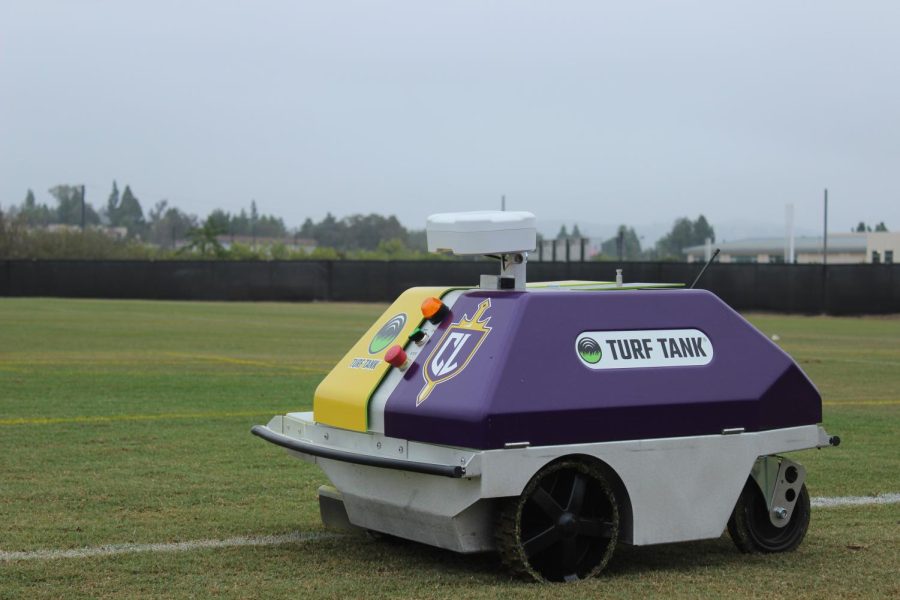Cal Lutheran adds field striping robot to its groundskeeping crew
The field striping robot has paved the way to bring in more automated machines that will save hours of time and manpower.
October 18, 2022
Last month, California Lutheran University added a field striping robot to its crew that has improved the time of painting lines for sports fields from almost five hours to one.
Before this addition, the field lines for sports were painted manually by the groundskeeping crew, which took hours and gallons of paint. Rafael Villicana Pantoja, Cal Lutheran groundskeeper who uses the robot frequently, said it saved a significant amount of time for him, and made post-stripe cleaning a “breeze”.
“Pretty much before we would need two to three guys … It would take anywhere from three to five hours on painting manually,” Pantoja said. “Now, it depends on what we’re painting, but the most it will take is an hour of actually striping.”
After hearing about issues with the time and effort manual line painting took, Facilities and Infrastructure Project Manager Nick Boudreaux researched alternatives and heard of a demo from Turf Tank, an autonomous field painter company, being given at another private school.
“I did a little research on it and I said, you know what? This thing sounds too good to be true,” Boudreaux said. “I reach out to the rep’, he came out, he did a demo and we were all blown away with how incredible this little machine is.”
The cost of the robot was far cheaper than Boudreaux was expecting, especially taking into consideration the manpower that it saved.
“We went with the Turf Tank model. They have a few competitors, but Turf Tank had definitely the best options. It holds the most amount of paint to do what we need it to do,” Boudreaux said.
Previously, almost 200 gallons of paint was used every week across all sports. Now, it has dropped to around 10 gallons.
In addition, short times between practices gave the groundskeeping crew little time to repaint lines, which was another issue manually painting lines presented.
“Sometimes we won’t make it,” Pantoja said. “Before, manually you would have to string and it’s hundreds of feet of string and you have to manually reel it in … Now all that completely is gone.”
The robot uses a combination of satellite GPS and digital floorplans to know where it is and paint the lines accurately. A representative from Turf Tank created floor plans for different sports which the robot follows.
“We take it to the field, you put your base station at home base, the robot knows where it’s at on the field and you just pick what floorplan you want,” Boudreaux said.
The only setup needed is calibrating the robot to the satellite depending on its position.
“It’s just minor calibrations before we get started to make sure the lines gonna go exactly where the 16-line is so you don’t make it wider. Like I said, it’s a breeze,” Pantoja said.
The Facility Operations and Planning department have since been looking into other automated ways of streamlining the upkeep of sports facilities.
“We are also trying to purchase a new reel mower that will allow for pattern mowing as seen on professional fields. Unfortunately, the current lead time for mowers is over six months,” Associate Vice President of Planning & Services Ryan Van Ommeren said.
There is potential for this robot to help in other aspects of the school. Boudreaux hopes to use it to help paint temporary commencement parking stalls and even the CLU rocks logo with a software update.
“We’ve only had it for about a month now, in real use. So, we’re still learning, but we’ve come a long way,” Boudreaux said.




















